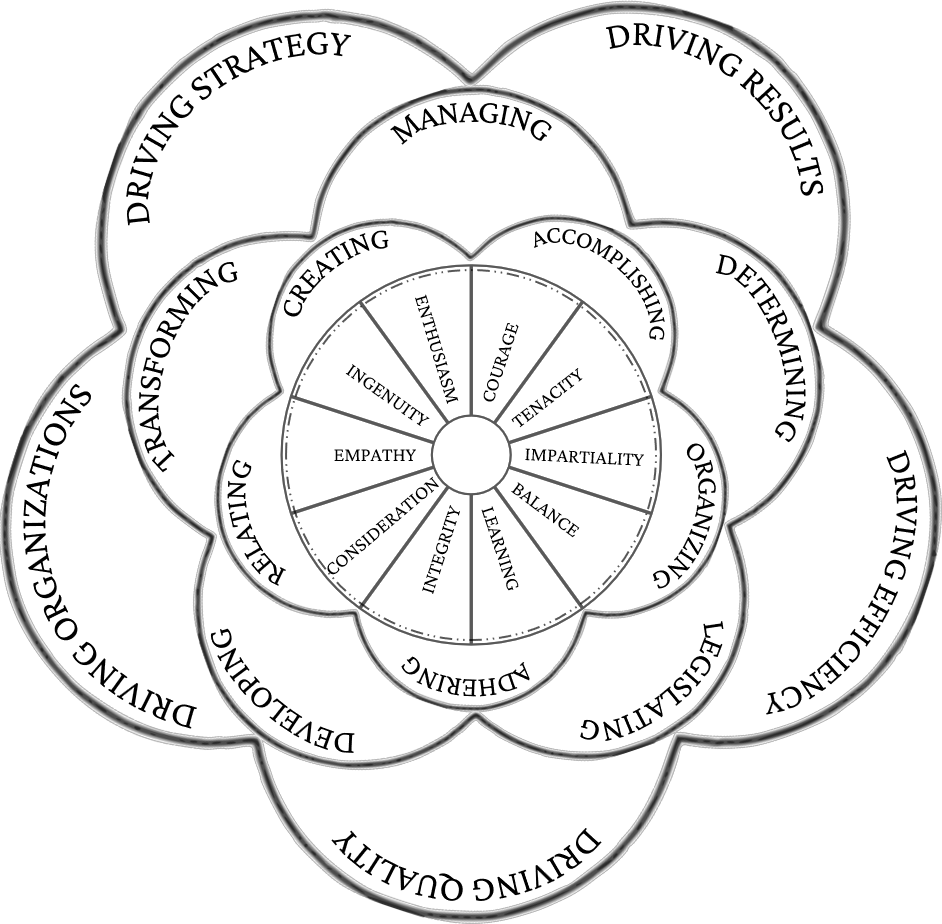The Mandala Model
The Mandala Model is the core of our tools and processes; a different kind of competency model
Why Our Competency Model Is Different
Interconnected
The individual competencies within the competency model are explicitly linked and build on one another to create more complex outcomes; this makes development planning, job design, and other talent processes both logical and organized
Simple
The Mandala Model contains 27 individual items; each item has a simple label and short definition; items do not ‘double dip’ into similar skills and clearly occupy their own space
Observable and Outcome Driven
Mandala Model items are written to be observable behaviors and results, not invisible such as inherent traits or values; people can assess them and also restate them in their own words
The Four Layers of the Mandala Model
Virtues
The central layer of the mandala includes behaviors which are the foundations of leadership
The First Circle: Personal Leadership
Outcomes defining success as a member of a team, when results are achieved through individual performance and collaboration with peers
The Second Circle: Team Leadership
Outcomes defining success as the achievement of groups, whether led directly or indirectly
The Third Circle: Organizational Leadership
Outcomes defining success as an organizational unit (department, division, or full company), requiring multiple functions and disciplines

